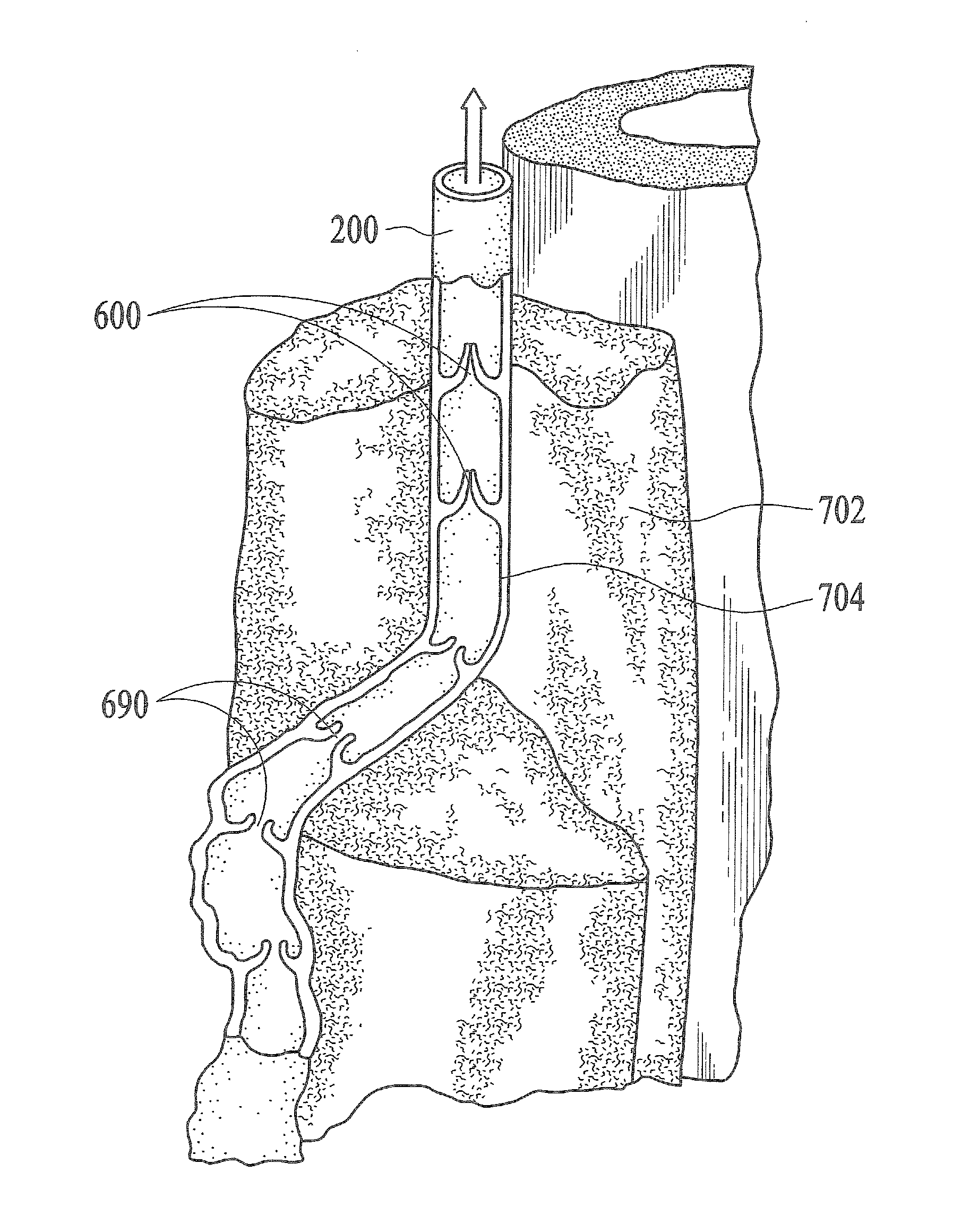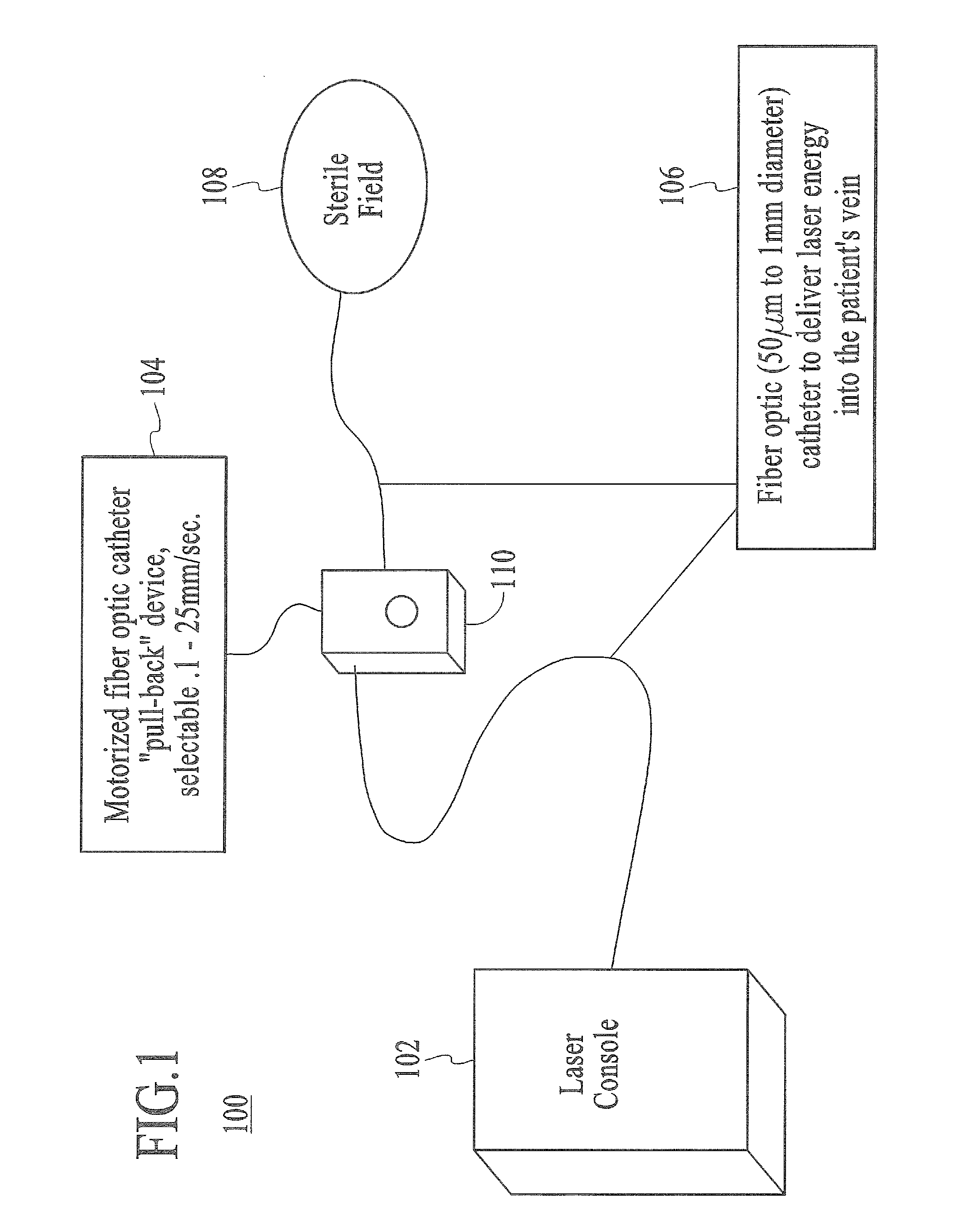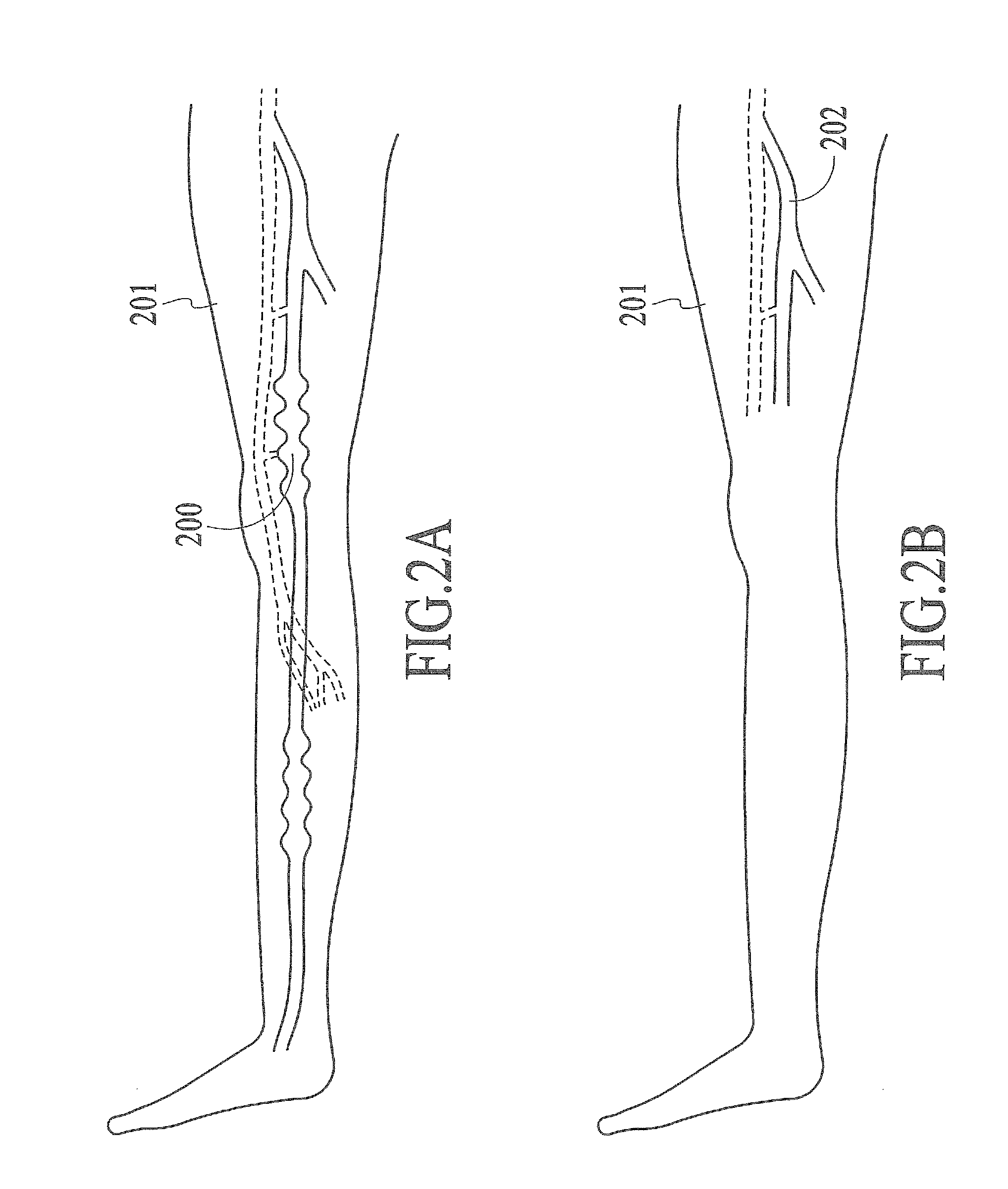Endovenous laser treatment generating reduced blood coagulation
a laser treatment and blood coagulation technology, applied in the field of varicose vein laser assisted treatment methods and equipment, can solve the problems of destroying endothelial cells, limiting the efficiency of heat transfer to the vessel wall, and requiring expensive and complicated catheters, so as to reduce the amount of blood present, reduce the formation of blood, and increase the safety and efficacy of endovenous laser treatment
- Summary
- Abstract
- Description
- Claims
- Application Information
AI Technical Summary
Benefits of technology
Problems solved by technology
Method used
Image
Examples
experiment # 1
Experiment #1
Coagulum Development with 1320 nm vs. 980 nm Laser
[0119]In a first experiment, coagulation formation on the fiber tip of an Nd:YAG pulsed laser having a wavelength of 1320 nm was compared to coagulation formation on the fiber tip of a Diode laser having a wavelength of 980 nm in continuous mode.
[0120]Method Overview:
[0121]Approximately 50 cc of porcine blood was stabilized with EDTA and placed in a beaker at room temperature. A standard 600 μm fiber was used on both laser systems. The power levels for both laser systems were measured using a Molectron PowerMax 600 power meter. The porcine blood was stirred between each interval. The fiber was cleaned using 3% hydrogen peroxide and wiped off with a Kim Wipe (®) between each firing. The fiber was checked using after each test to confirm a circular aiming beam with no tails, and checked by the power meter between each firing. Clot sizes were measured visually using a metric ruler and recorded in a lab notebook and digital ...
experiment # 2
Experiment #2
Coagulum as a Function of Laser Power and Power Density
[0128]In a second experiment, coagulation formation on a fiber tip was measured as a function of laser peak power and power density for an Nd:YAG laser having a wavelength of 1320 μm.
[0129]Method Overview
[0130]Approximately 10 cc of porcine blood was stabilized with EDTA and placed in a graduated cylinder at room temperature. A standard 600 μm fiber and a 365 μm fiber were each used to deliver energy to the blood medium. Clot sizes were measured using a metric ruler.
[0131]First Test:
[0132]The first test was to compare coagulation accumulations between the 600 μm fiber and the 365 μm fiber.
[0133]
SystemSettingsTimeFiberPower DensityAiming Beam1320 nm7 W / 50 Hz140 mJ / pulse5-40 sec600 μm 330,000 W / cm2None thru clot@ width =150 μsec1320 nm7 W / 50 Hz140 mJ / pulse5-40 sec365 μm1,000,000 W / cm2None thru clot@ width =150 μsec
[0134]Clot formation was compared at 5-second intervals for both fibers. Coagulum was cleaned off with a...
experiment # 3
Experiment #3
Endovenous Ablation with Laser Induced Thrombolysis
[0158]Thermally induced thrombus is common during treatment of varicose veins with laser or radiofrequency catheters, and can potentially reduce procedure efficiency and cause vein wall perforations. Proximal thrombus can break off into the venous system and intravenous thrombus can mask non-closed segments. To determine the requirements for minimal thrombus formation, various pulsed and continuous wave lasers and various fibers were fired in a 15 ml sample of porcine blood. The resulting coagulum was measured. All continuous wave lasers generated coagulum on the fiber tip, regardless of wavelength or fiber design. Pulsed wave lasers did not generate as much coagulum on the fiber tip. Protected or encapsulated tip fibers did not eliminate coagulum formation, although fiber cladding design appears to affect coagulum formation. Coagulum formation may be minimized by electing a 1320 nm pulsed laser with a short pulse lengt...
PUM
 Login to View More
Login to View More Abstract
Description
Claims
Application Information
 Login to View More
Login to View More - R&D
- Intellectual Property
- Life Sciences
- Materials
- Tech Scout
- Unparalleled Data Quality
- Higher Quality Content
- 60% Fewer Hallucinations
Browse by: Latest US Patents, China's latest patents, Technical Efficacy Thesaurus, Application Domain, Technology Topic, Popular Technical Reports.
© 2025 PatSnap. All rights reserved.Legal|Privacy policy|Modern Slavery Act Transparency Statement|Sitemap|About US| Contact US: help@patsnap.com



